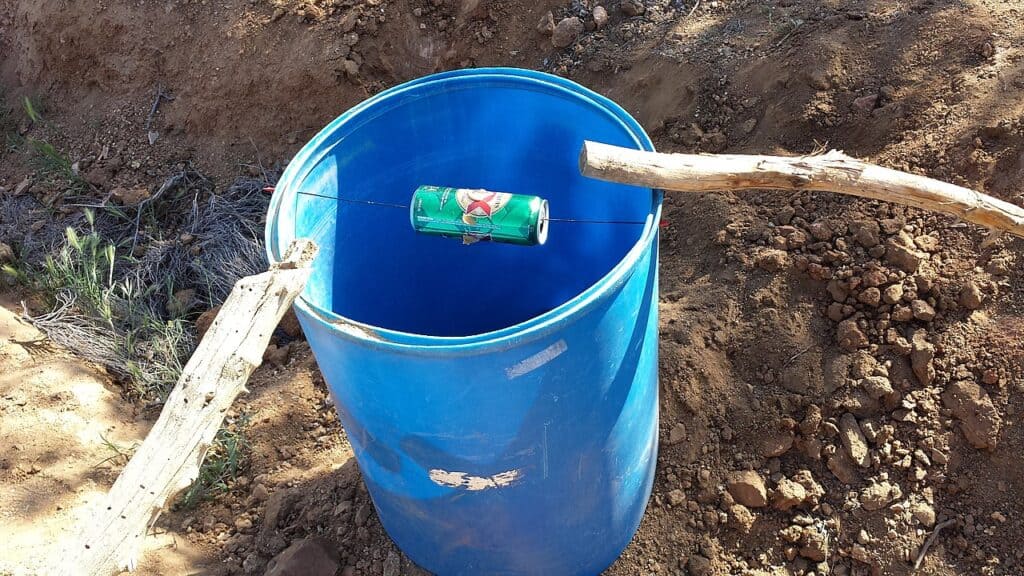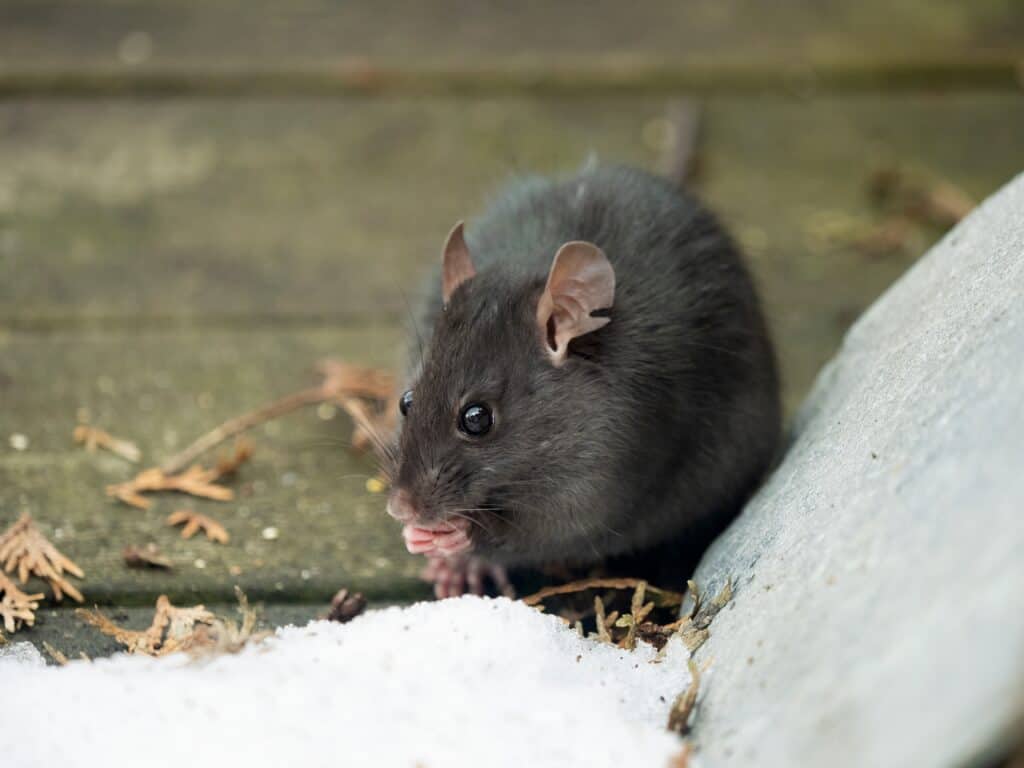As crafty as rats are, coming up with an effective homemade rat trap is a tall order. Whether you purchase a trap from the store or come up with your trap, it seems like rats are always a step ahead of the game. This is especially true if you’re dealing with more than one.
One of those rats always comes off as the leader of the pack and is seemingly impervious to trapping methods. It will avoid rat pellets, even if they are slathered in peanut butter. It will deftly move around spring traps and avoid walking into bait traps. It’s as if the rat knows what you’re doing before you do it.
So, the most effective rat traps require some meticulous work to put together. You have to wear gloves and put them on without using skin-to-glove contact. Patience is a virtue as well because a rat will avoid anything new that suddenly appears in its environment. Sometimes, it’s best to stick with keeping it simple.
The Most Effective Homemade Rat Trap Solution

©Michael Dorausch from Venice, USA / CC BY-SA 2.0 – Original / License
There are several ways to approach this, and we’ve come up with one, simple solution. However, nothing will work if your smell is all over the trap. A rat will avoid it entirely if there’s even a whiff of you hanging about the trap.
Plus, and this is an important point, no matter what trap you lay, the rat will most likely avoid the trap for a day or two as it adjusts to its existence. The craftier the rat, the longer it may go avoiding the trap. It’s a game of patience.
Materials Needed
You’ll need a little space to create this trap because it includes a five-gallon bucket. The idea is to create something the rat will go into, using bait to lure it in, but it can’t get back out of. You can purchase catch-and-release traps like this one, but it’s just as effective as anything you will find at the store.
- Rubber Gloves
- A flat, 1 × 4 or 6 board
- A five-gallon bucket
- Vegetable oil
- Peanut Butter
- Something stable to prop the five-gallon bucket on
Peanut butter is a very attractive bait for rats. It has a strong smell, and it’s far more effective than cheese, which is mythical in its rat-attracting qualities but doesn’t measure up in reality.
Choosing a Location
It won’t do you any good to just lay the trap out anywhere and assume the rat will find it. The most effective homemade rat traps owe their success to placement as much as bait and mechanism. The key to the best trap placement is to discover the rat’s habits when it comes to traveling to and from.
The best way to do this is to seek out rat droppings. Inside the house, you will almost always find these droppings in well-covered areas. Rats do not want to be visible, so they will travel behind every obstacle in the house, only coming out when they have to. This means looking behind the couches, recliners, the back of pantry cabinets, the back wall of the sink cabinet, behind dressers, etc.
Set your bucket up at the beginning or end of these areas, only if you see rat droppings (shiny, black, scattered, and between 1/2” and 3/4” in size) behind them.
Putting Together Your Bucket Trap
The five-gallon bucket trap is a simple design with a simple and effective mechanism. Be sure to put on your gloves, only after washing your hands with soap that lacks a strong smell. Pour about 3 tablespoons of vegetable oil into the bucket, smearing it all over the walls. Drop your peanut butter (2 or 3 tablespoons) at the bottom of the bucket.
Find something stable to hold your bucket up at a 30° angle or higher. Place your 1 × 4 or 1 × 6 in place to create a ramp pathway for the rat to travel up to the lip of and enter the bucket. The rat will go after the peanut butter inside the bucket and, thanks to the vegetable oil, will find it far too slick to climb back out.
It’s as simple as that. The only thing you need to ensure is that whatever is propping your bucket up is very stable and will hold everything in place, even as the rat is flopping around in the bottom of the bucket, trying to escape. Of course, the only drawback to this mechanism is you will have to deal with a very live and very upset rat when you wake up in the morning.
You can even stand the bucket straight up and down, so long as your ramp is not too short and steep for the rat to climb up.
Alternatives

©Ernie Cooper/Shutterstock.com
There are a few alternative rat traps that operate under the same, basic principle as the five-gallon bucket. The bucket works great outside, but space may become an issue within the house or garage. For instance, for a straight up and down bucket, a rat won’t leap off the rim and into the bucket. So, you have to trick it into falling in.
You can do this with a swivel lid, a rotating cylinder that runs across the opening of the bucket, or even a simple stick that’s long enough to sit on top of the bucket and light enough to easily roll when the rat is standing on it. You can even attack a diving board-like extension over the bucket opening that collapses when the rat walks out over it.
Final Thoughts
The five-gallon bucket trap is the most effective homemade rat trap you can make, mostly because it’s so simple and all you need to do is lure the rat in. It’s also relatively inexpensive and, the best part is, that you can use it over and over again.
The photo featured at the top of this post is © Liudmila Chernetska/iStock via Getty Images
Thank you for reading! Have some feedback for us? Contact the AZ Animals editorial team.







